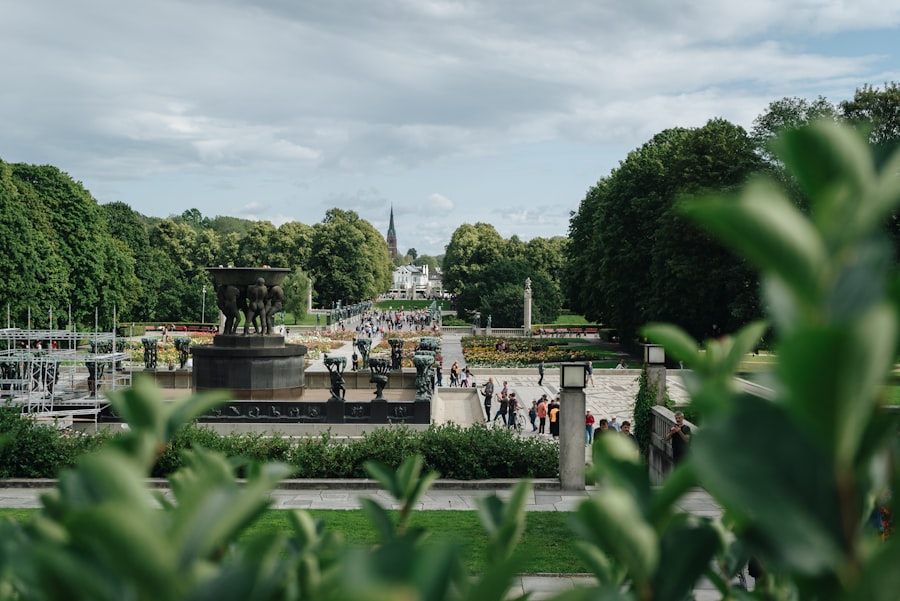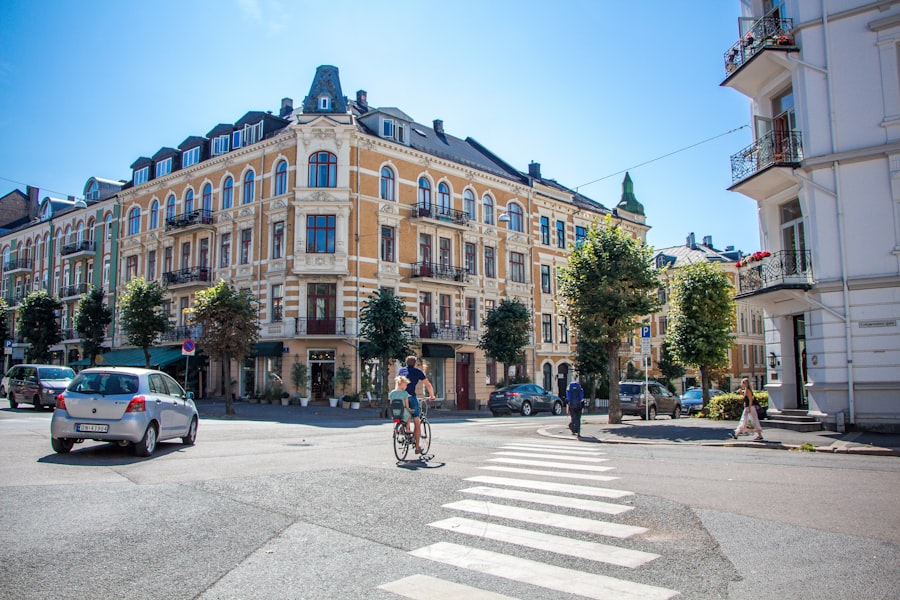Norway, a land of breathtaking landscapes and rich cultural heritage, boasts a culinary scene that is as diverse as its geography. The country’s regional food traditions are deeply rooted in its history, shaped by the natural resources available in each area and the influences of various cultures over centuries. From the rugged mountains of the north to the picturesque fjords of the west, each region offers a unique gastronomic experience that reflects the local environment and the people who inhabit it.
As one delves into Norway’s culinary landscape, it becomes evident that food is not merely sustenance; it is a vital part of the nation’s identity, a means of connecting with the past, and a celebration of community. The significance of food in Norway extends beyond mere consumption; it is intertwined with traditions, festivals, and social gatherings. Each region has its own specialities, often passed down through generations, showcasing the ingenuity and resourcefulness of the Norwegian people.
As we explore the various culinary influences across Norway, we will uncover how geography, climate, and cultural exchanges have shaped the food traditions that define this remarkable country. Schedule a one-on-one consultation with our relocation specialists to simplify your move to Norway. https://norwayrelocation.no/one-hour-strategy-session/
Summary
- Norway’s regional food and traditions are diverse and influenced by the country’s climate and geography.
- Northern Norway’s culinary influences are shaped by its proximity to the Arctic Circle and reliance on seafood and reindeer meat.
- Western Norway offers unique flavours with its use of fresh seafood, wild game, and traditional preservation methods.
- Eastern Norway is known for its traditional dishes like rakfisk and lutefisk, as well as festivals like the Matstreif food festival.
- Southern Norway has a rich culinary heritage with its use of local produce, dairy products, and traditional baking techniques.
The Culinary Influences of Northern Norway
Northern Norway, known for its dramatic landscapes and harsh climate, has developed a unique culinary identity that reflects its environment. The region’s food is heavily influenced by its proximity to the Arctic Ocean, which provides an abundance of seafood. Traditional dishes often feature fish such as cod, herring, and salmon, which are staples in the local diet.
The practice of fishing has been a way of life for generations, and methods such as drying and salting fish have been perfected over time to preserve these valuable resources. In addition to seafood, Northern Norway is also known for its use of game meat, particularly reindeer and moose. These meats are often prepared in hearty stews or served with root vegetables, providing warmth and sustenance during the long winter months.
The indigenous Sámi culture has played a significant role in shaping the culinary landscape of this region, with traditional dishes reflecting their deep connection to nature and the land. Festivals celebrating local produce and traditional cooking methods are common, allowing communities to come together and honour their heritage.
Exploring the Unique Flavours of Western Norway

Western Norway is renowned for its stunning fjords and mountainous terrain, which have greatly influenced its culinary traditions. The region’s cuisine is characterised by its use of fresh, local ingredients, with an emphasis on dairy products and lamb. The lush pastures provide ideal conditions for grazing sheep, resulting in high-quality lamb that is often featured in traditional dishes such as “lammestek” (roast lamb) and “fårikål” (lamb and cabbage stew).
Moreover, Western Norway is famous for its cheese production, particularly “brunost,” a brown cheese made from whey that has a sweet, caramel-like flavour. This cheese is a staple in Norwegian households and is often enjoyed on bread or waffles. The region’s culinary scene also embraces seafood, with dishes like “klippfisk” (dried and salted cod) being popular among locals.
Festivals celebrating local food products are abundant in this region, showcasing the rich flavours and traditions that define Western Norwegian cuisine.
Traditional Dishes and Festivals in Eastern Norway
Eastern Norway presents a different culinary landscape, where traditional dishes are often influenced by agricultural practices and seasonal produce. The region is known for its hearty fare, with dishes such as “raspeballer” (potato dumplings) and “kjøttkaker” (meatballs) being popular choices during colder months. These comforting meals are typically served with rich gravies and seasonal vegetables, reflecting the importance of using locally sourced ingredients.
Festivals in Eastern Norway often revolve around food, celebrating the harvest season and traditional cooking methods. Events such as “Matfestivalen” (the Food Festival) highlight local produce and artisanal products, allowing visitors to sample a variety of traditional dishes while learning about the region’s culinary heritage. The emphasis on community and sharing food during these festivals reinforces the idea that food is not just about nourishment but also about connection and celebration.
The Rich Culinary Heritage of Southern Norway
Southern Norway is characterised by its mild climate and fertile land, making it an ideal region for agriculture. The culinary heritage here is rich and varied, with an abundance of fruits, vegetables, and grains contributing to a diverse diet. Traditional dishes often feature ingredients such as potatoes, carrots, and cabbage, which are staples in many households.
One notable dish from Southern Norway is “lutefisk,” a traditional dish made from dried fish that has been soaked in lye before being cooked. This dish is often served during festive occasions and is a testament to the region’s historical reliance on preservation methods. Additionally, Southern Norway is known for its fruit production, particularly apples and berries, which are used in desserts and preserves.
The region’s culinary festivals celebrate these local ingredients, showcasing the vibrant flavours that define Southern Norwegian cuisine.
The Importance of Seafood in Coastal Regions

Norway’s extensive coastline plays a crucial role in shaping its culinary traditions, particularly when it comes to seafood. Coastal regions have long relied on the ocean’s bounty for sustenance, with fish being a central component of the Norwegian diet. Cod, herring, mackerel, and shellfish are just a few examples of the diverse seafood available along the coast.
The significance of seafood extends beyond everyday meals; it is also integral to many cultural celebrations and festivals. Events such as “Fiskefestivalen” (the Fish Festival) highlight the importance of fishing in Norwegian culture while offering visitors a chance to sample fresh catches prepared by local chefs. The emphasis on sustainable fishing practices ensures that future generations can continue to enjoy this vital resource while preserving the delicate balance of marine ecosystems.
Indigenous Ingredients and Culinary Traditions in Sami Culture
The Sámi people, indigenous to Northern Norway, have a rich culinary tradition that reflects their deep connection to nature and the land. Their diet primarily consists of reindeer meat, fish, berries, and wild herbs—ingredients that are sourced from their natural surroundings. Traditional Sámi dishes often involve simple preparation methods that highlight the flavours of these indigenous ingredients.
One notable dish is “bidos,” a hearty reindeer stew typically made with root vegetables and seasoned with herbs. This dish not only provides sustenance but also serves as a cultural symbol of Sámi identity. The Sámi have long practiced sustainable hunting and gathering methods, ensuring that their culinary traditions remain closely tied to their respect for nature.
Festivals celebrating Sámi culture often feature traditional foods, allowing visitors to experience the unique flavours and customs that define this indigenous heritage.
The Role of Farming and Agriculture in Inland Regions
Inland regions of Norway are characterised by their agricultural practices, which have significantly influenced local cuisine. The fertile valleys provide ideal conditions for farming, resulting in an abundance of grains, vegetables, and livestock. Traditional dishes from these areas often feature locally sourced ingredients that reflect the changing seasons.
Dishes such as “grøt” (porridge) made from barley or oats are common breakfast staples in inland communities. Additionally, dairy farming plays a significant role in shaping the culinary landscape; cheese production is prevalent in these regions, with artisanal cheeses being celebrated for their unique flavours. Agricultural festivals highlight local produce and traditional cooking methods while fostering community spirit through shared meals and celebrations.
How Climate and Geography Impact Food and Traditions
Norway’s diverse climate and geography have a profound impact on its food traditions. The country’s varying landscapes—from coastal regions to mountainous terrains—dictate what ingredients are available and how they are prepared. In coastal areas, seafood takes centre stage due to easy access to the ocean’s bounty; conversely, inland regions rely more heavily on agriculture.
The harsh winters also influence culinary practices; traditional dishes are often hearty and designed to provide warmth during cold months. Preservation methods such as drying, smoking, or fermenting have been developed over centuries to ensure food security during long winters when fresh produce is scarce. This adaptability reflects the resilience of Norwegian culture and its ability to thrive despite challenging environmental conditions.
The Significance of Food in Norwegian Festivities and Celebrations
Food plays an integral role in Norwegian festivities and celebrations throughout the year. From Christmas feasts to Midsummer gatherings, traditional dishes are often at the heart of these events. Special occasions call for elaborate meals featuring regional specialities that bring families together in celebration.
During Christmas, for example, many Norwegians enjoy “ribbe” (pork ribs) or “lutefisk,” accompanied by an array of side dishes such as red cabbage and potatoes. Similarly, Midsummer celebrations often feature barbecues with fresh seafood or grilled meats enjoyed outdoors with family and friends. These communal meals foster connections between generations while reinforcing cultural traditions that have been passed down through time.
Preserving and Promoting Regional Food and Traditions in Norway
As globalisation continues to influence culinary practices worldwide, there is an increasing emphasis on preserving regional food traditions in Norway. Efforts are being made to promote local ingredients through initiatives such as farmer’s markets and food festivals that celebrate traditional cooking methods. Organisations dedicated to preserving Norwegian culinary heritage work tirelessly to ensure that future generations can appreciate their rich food culture.
Educational programmes focusing on traditional cooking techniques are becoming more prevalent, allowing individuals to connect with their roots while fostering a sense of pride in their regional cuisine. In conclusion, Norway’s regional food traditions are a testament to its diverse geography and rich cultural heritage. From the seafood-rich coasts to the agricultural heartlands inland, each region offers unique flavours that reflect local customs and practices.
As we celebrate these culinary traditions through festivals and communal meals, we honour not only our past but also our commitment to preserving these invaluable aspects of Norwegian culture for generations to come. For those looking to immerse themselves further into Norwegian culture—especially if you’re considering relocating—organisations like the Norway Relocation Group can provide invaluable assistance throughout your journey. They offer guidance on various aspects of moving to Norway while helping you navigate your new environment seamlessly.
Additionally, if you wish to deepen your understanding of Norwegian language alongside your culinary exploration, consider enrolling in courses at the NLS Norwegian Language School in Oslo. Their comprehensive language programmes will not only enhance your communication skills but also enrich your appreciation for Norway’s vibrant culture—making your relocation experience all the more rewarding.
Register for a Norwegian class at the NLS Norwegian Language School now!

